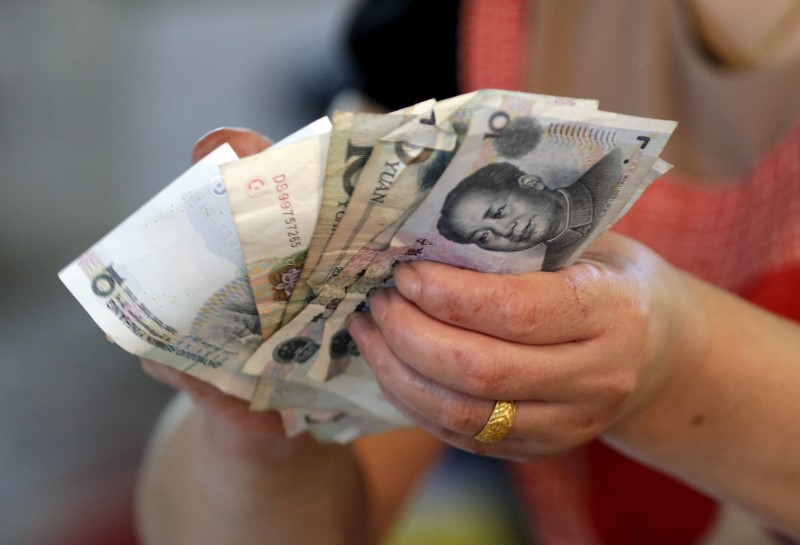By Kevin Yao and Xiaoyi Shao
BEIJING (Reuters) - Chinese banks armed with fresh lending quotas extended a record 2.51 trillion yuan ($385.40 billion) of new loans in January, far more than markets had expected, suggesting Beijing is keeping monetary policy loose to counter a protracted economic slowdown.
Economists polled by Reuters had expected new yuan loans to surge to a near seven-year high of 1.8 trillion yuan in January, tripling from 597.8 billion yuan in December.
Analysts attributed the lending spike to increased injections by the central bank ahead of the Lunar New Year holidays in early February, a traditional tendency among Chinese banks to "front load" loans at the start of a year and companies reducing their exposure to foreign-currency loans.
"Chinese banks expanded their balance sheet aggressively in the first month of this year, which implies implicit support from the government to counter the economic slowdown," said Zhou Hao, Commerzbank (DE:CBKG) Asia senior emerging markets economist in Singapore.
Analysts also attributed the surge in new loans to soaring demand for mortgages as property prices recover and government steps to fast-track infrastructure projects to spur activity.
While economists have sometimes speculated that big swings in China's credit data were linked more to speculative activity, the latest data appeared to suggest solid demand in the real economy. Medium-and long-term loans to households were up 45 percent in January from the same period a year ago while such loans to companies jumped 73 percent.
Total social financing, another important indicator of China's credit expansion, rose to 3.42 trillion yuan in January from 1.82 trillion yuan in December.
Part of that may reflect massive infusions of cash into the banking system by the People's Bank of China ahead of the long holiday to avert any risks of a cash crunch. The PBOC injected 1.53 trillion yuan via its standing lending facility (SLF), medium-term lending facility (MLF) and pledged supplementary lending (PSL).
Some economists believe the PBOC is currently favoring liquidity injections as a policy tool rather than long-expected cuts to its policy interest rate and bank reserve ratio requirements (RRR), which authorities worry could put further depreciation pressure on the yuan currency <CNY=CFXS>.
According to sources, Zhang Xiaohui, an assistant governor at the PBOC, has said the central bank would not rush to cut the amount of cash banks must hold in reserves, as doing so could send a strong signal on policy easing.
MORE EASING?
But while the central bank may shun further cuts in its main interest rate and RRR in the near term, it may still have to ease policy again, analysts say.
The PBOC has cut its policy rate six times since November 2014 and reserve requirements several times, but both remain relatively high, giving it plenty of room.
"As capital outflows continued, we believe that the PBOC will still need to lower the reserve requirement ratio (RRR) to permanently inject liquidity into the economy," wrote ANZ economists in a research note, noting that a further cut in RRR was still possible in the first quarter.
Bank lending usually spikes in China in January as banks, which face limits on how much they can lend each year, squeezes much lending as possible into the first month to protect their market share.
The spike in new loans in January also could be due to Chinese companies making early repayments of their foreign-denominated loans and bonds to reduce their currency exposure after the yuan weakened, analysts say.
China Eastern Airlines (HK:0670) said last month it had recently repaid $1 billion worth of dollar debt to reduce its exposure to currency volatility.
Broad M2 money supply (M2) in January also rose to a 19-month high of 14.0 percent in January from a year ago, beating expectations of 13.4 percent and December's 13.3 percent.
The world's second-largest economy grew 6.9 percent in 2015, its weakest in a quarter of a century, as activity was weighed down by sluggish demand at home and abroad, massive industrial overcapacity, cooling investment and a weak property market.
Even with more rate cuts, economists see growth cooling further to 6.5 percent this year, and some market watchers believe real growth levels may already be much weaker.

($1 = 6.5127 Chinese yuan renminbi)